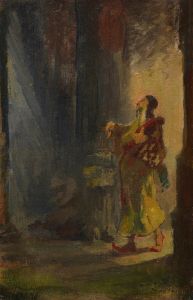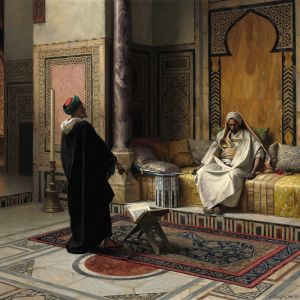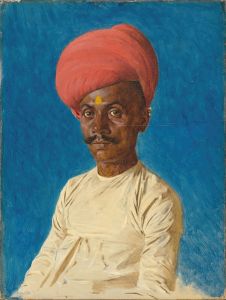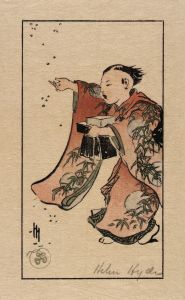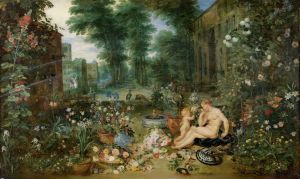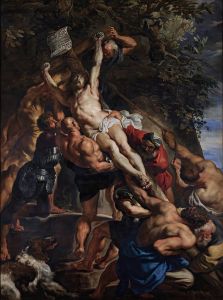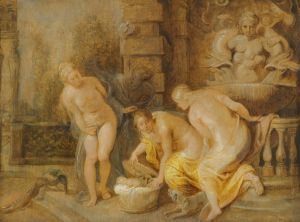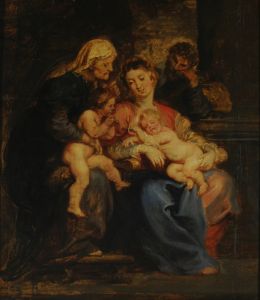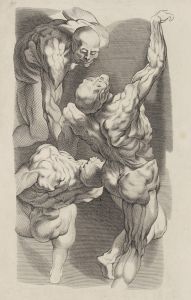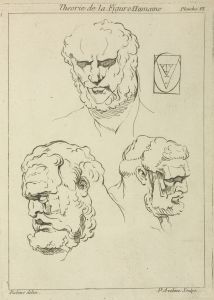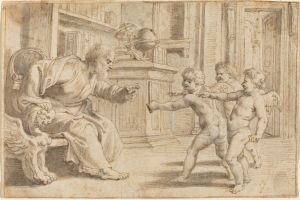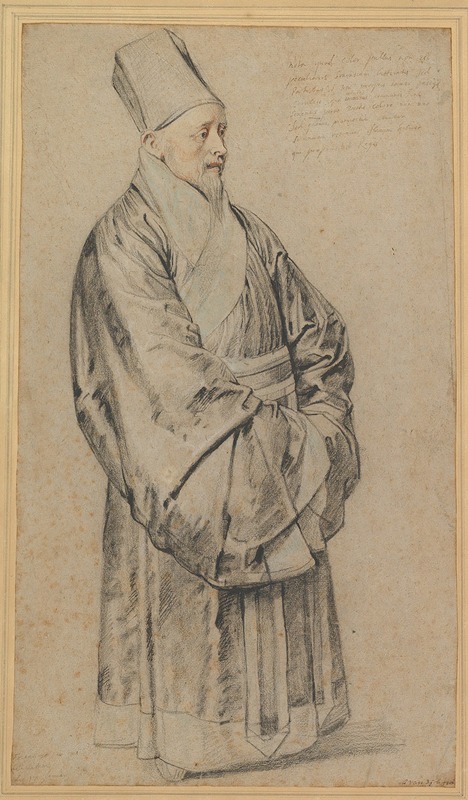
Portrait of Nicolas Trigault in Chinese Costume
A hand-painted replica of Peter Paul Rubens’s masterpiece Portrait of Nicolas Trigault in Chinese Costume, meticulously crafted by professional artists to capture the true essence of the original. Each piece is created with museum-quality canvas and rare mineral pigments, carefully painted by experienced artists with delicate brushstrokes and rich, layered colors to perfectly recreate the texture of the original artwork. Unlike machine-printed reproductions, this hand-painted version brings the painting to life, infused with the artist’s emotions and skill in every stroke. Whether for personal collection or home decoration, it instantly elevates the artistic atmosphere of any space.
"Portrait of Nicolas Trigault in Chinese Costume" is an intriguing painting by the renowned Flemish artist Peter Paul Rubens. Created in 1617, this portrait captures the Jesuit missionary Nicolas Trigault, who was instrumental in promoting the Jesuit missions in China during the early 17th century. The painting is notable for its depiction of Trigault in traditional Chinese attire, reflecting the cultural exchange between Europe and China during this period.
Nicolas Trigault was a French Jesuit priest who played a significant role in the Jesuit China missions. Born in 1577 in Douai, which was then part of the Spanish Netherlands, Trigault joined the Society of Jesus in 1594. He traveled to China in 1610, where he worked to spread Christianity and engage in cultural exchange. Trigault was known for his linguistic skills and his efforts to translate and adapt Christian texts for the Chinese audience.
The portrait by Rubens is significant not only for its artistic merit but also for its historical context. Rubens, a master of the Baroque style, was known for his dynamic compositions and vibrant use of color. In this painting, he captures Trigault in a moment of cultural intersection, dressed in a Chinese silk robe and cap, which were likely garments Trigault wore during his time in China. This attire symbolizes the Jesuit strategy of adopting local customs to facilitate their missionary work.
Rubens' portrayal of Trigault is both respectful and insightful, highlighting the Jesuit's dedication to his mission and his willingness to immerse himself in a foreign culture. The painting reflects the broader Jesuit approach to missions, which emphasized cultural adaptation and dialogue. This approach was part of the Jesuits' broader strategy to gain the trust and respect of the Chinese elite, which they believed was essential for the success of their missionary efforts.
The portrait is also a testament to the global connections that were being forged during the early modern period. It illustrates the flow of ideas, people, and goods between Europe and Asia, a process that was facilitated by the Jesuits and other missionary orders. The painting serves as a visual document of this period of cultural exchange and the role that individuals like Trigault played in bridging these two worlds.
Today, "Portrait of Nicolas Trigault in Chinese Costume" is housed in the Kunsthistorisches Museum in Vienna, where it continues to be a subject of interest for art historians and scholars of cultural exchange. The painting is an excellent example of Rubens' ability to capture the essence of his subjects while also providing a window into the historical and cultural contexts in which they lived.
In summary, Rubens' portrait of Nicolas Trigault is a fascinating work that encapsulates the spirit of cultural exchange during the early 17th century. It highlights the Jesuit missions' efforts to engage with Chinese culture and the broader global interactions of the time. Through this painting, Rubens not only immortalizes Trigault's likeness but also offers a glimpse into a pivotal moment in the history of East-West relations.





